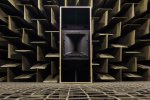Re: New DIY Mid High
It's a good question.
I would seriously consider buying a pair if they we're available ready for the road
If someone could make the cabinet, I'd buy it and load it with drivers myseld and paint it.
Sent from my iPhone
In fact, it begs the question...why can't the big brands do this?
The stereo image was incredible, the tonal balance was incredible with a beautiful range. Well done Peter.
It's a good question.
I would seriously consider buying a pair if they we're available ready for the road
If someone could make the cabinet, I'd buy it and load it with drivers myseld and paint it.
Sent from my iPhone




